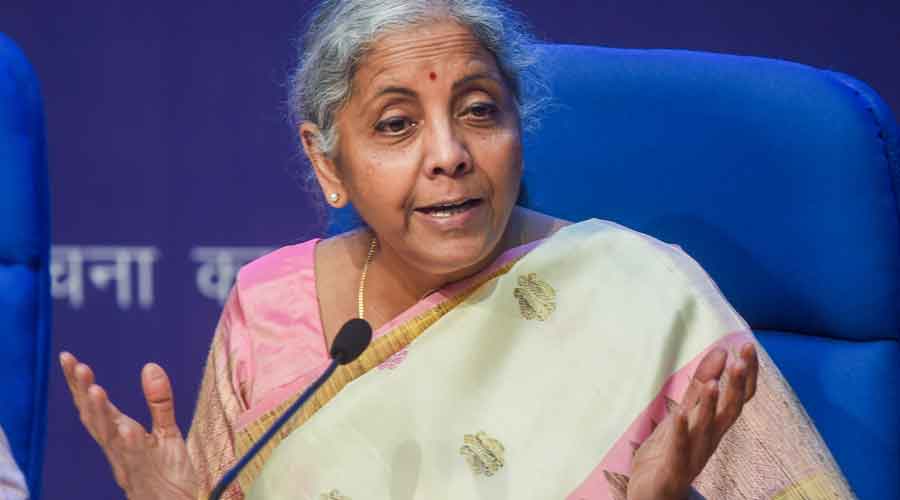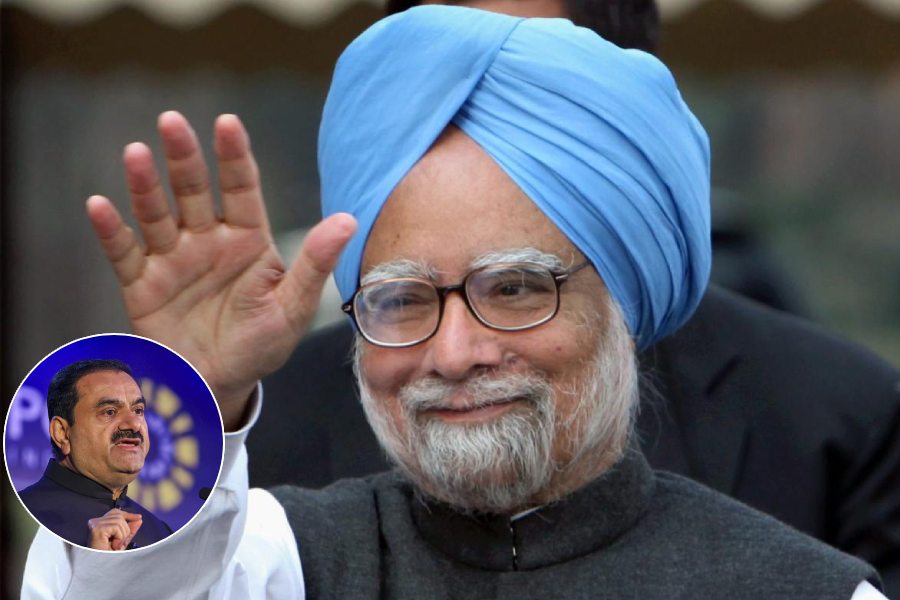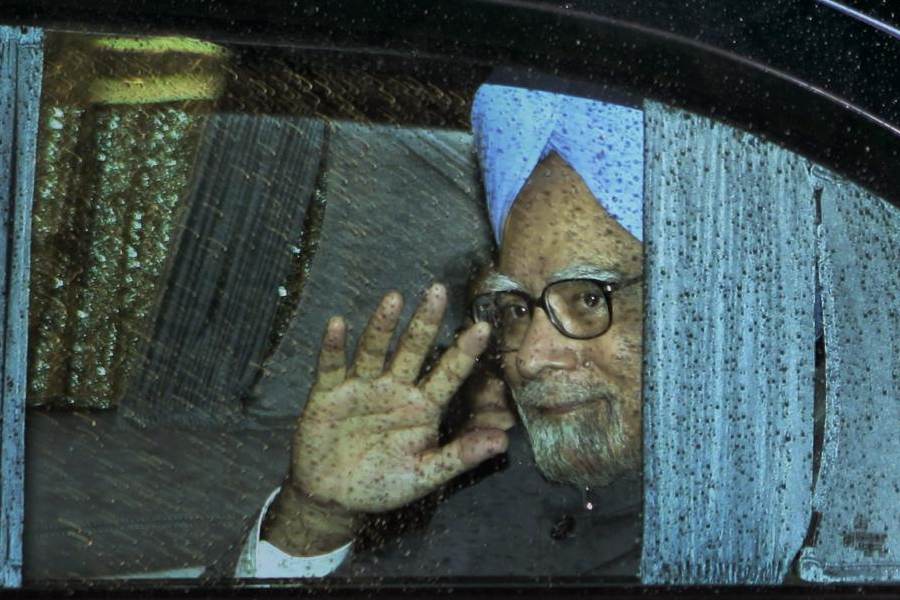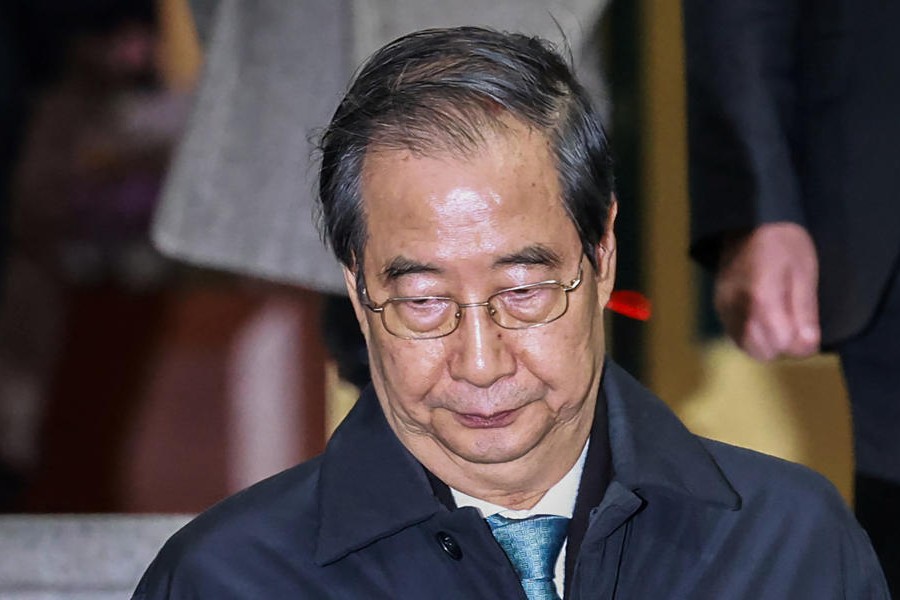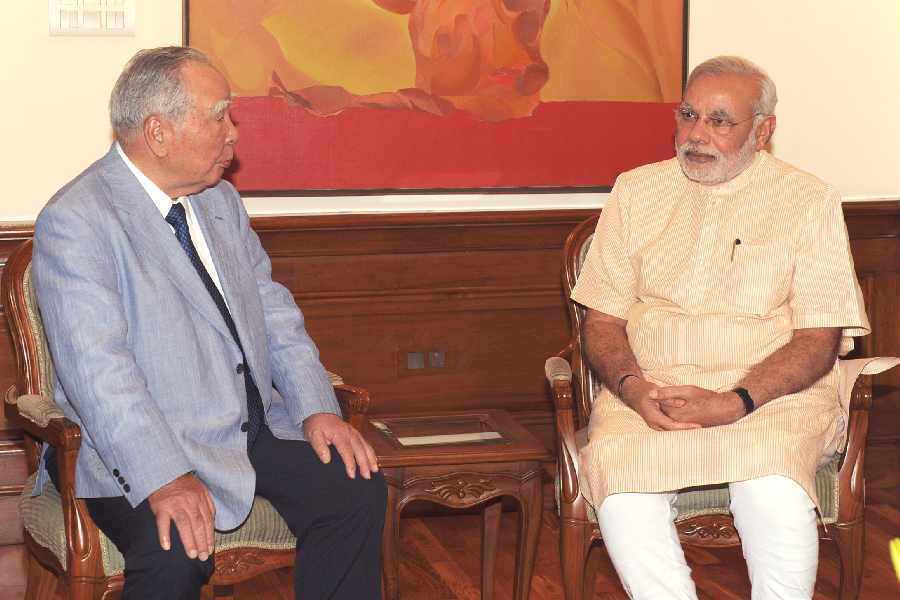Union finance minister Nirmala Sitharaman began her budget speech highlighting the overall sharp rebound and recovery of the economy, claiming it to be reflective of India’s strong resilience.
“India’s economic growth in the current year is estimated to be 9.2 per cent, highest among all large economies,” she said amid a thundering applause from the treasury benches.
It was clear from the opening remarks of the finance minister that she was tabling a “growth-oriented budget” narrative, which the saffron ecosystem lapped up, heaping praise on the Jawaharlal Nehru University alumna for giving the right medicine to an economy that is coming out of the pandemic. The mood in the ruling camp was similar to that on Dalal Street with the bellwether BSE Sensex closing the day 1.46 per cent higher.
In an era where the performance of the economy is gauged from the sentiment on the capital markets, the loud cheers from the bourses — with the bulls taking control — will help the ruling party claim that all’s well.
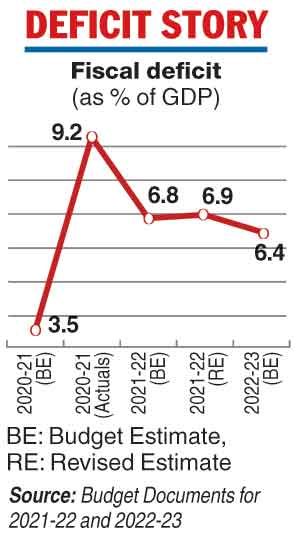
However, if one looks at the some of the numbers presented in Economic Survey 2021-22, which Sitharaman tabled in the Parliament on Monday, the hyperbole around the growth story becomes suspect as one of the highlights of the “State of the Economy” chapter of the document makes it amply clear that the GDP is 1.3 per cent above the pre-pandemic level.
Given the impact of the pandemic on the world economy, the Indian economy’s recovery over the situation in 2019-20 should not be wished away, but the question is over the song and dance that accompanies what can at best be called a pedestrian performance.
An integral part of the growth story spun in the Parliament — with the implicit assumption that nationalist Indians will believe it without batting an eyelid — this afternoon was an assertion about the stability of the overall macro-economic situation in the country.
There is every possibility that an elaborate social media campaign will make a majority of Indians rejoice over the macro-economic stability though a reality check doesn’t require a mastery over economics. One just needs to check a few numbers — like the deficit situation and the indebtedness — before giving in to what Sitharaman said in the Parliament.

“The fiscal deficit in 2022-23 is estimated at 6.4 per cent of GDP, which is consistent with the broad path of fiscal consolidation announced by me last year to reach a fiscal deficit level below 4.5 per cent by 2025-26. While setting the fiscal deficit level in 2022-23, I am conscious of the need to nurture growth, through public investment, to become stronger and sustainable,” she said.
The finance minister spoke about fiscal consolidation, but the numbers (see chart) show a poor record in containing fiscal deficit — the difference between the government’s revenue receipts plus non-debt capital receipts and the total expenditure — that in turn is resulting in high borrowings. The budget documents reveal that the government will borrow about Rs 11.6 lakh crore from the market in 2022-23, which is nearly Rs 2 lakh crore higher than the current year’s budget estimate of Rs 9.7 lakh crore.
If the country’s deficit record and indebtedness is compared with China, it becomes clear that the distance cannot be bridged with mere intent.
Sitharaman would like Indians to believe the budget narrative that the high deficit is the fallout of the government’s commitment to the welfare of the vulnerable sections and emphasis on job creation through higher public investments, which would encourage the private sector to come forward and contribute in growth and creation of employment.
The promise of higher public investment reads nice on paper, but suspicion arises because the finance minister included spending on guaranteed and sundry liabilities for Air India, which the government has sold, as capital expenditure in its revised estimate for 2021-22. The claim of over Rs 7.5 lakh crore capital investment next fiscal is also suspect as sum is likely to include green bonds worth Rs 1 lakh crore to fund green industries and 50-year interest-free loans to state government to catalyse investments.
The hope of a private sector-led growth seems premature at a time its consumption and investment are still below pre-Covid levels and capacity utilisation remains at little over 70 per cent.
Besides, a scrutiny of Sitharaman’s announcements reveals that the budget didn’t have anything for the poor and the marginalised in India, a country where over 84 per cent households reported a loss in income because of the pandemic. Several reports and studies revealed that the loss in income accentuated inequality as the rich got richer and the poor became poorer.
Sitharaman’s response to this reality — with lower outlays on food and fertiliser subsidy for the next fiscal in comparison to what the government is likely to spend this year — is bound to raise the question whether the government is sympathetic towards the needs of the poor.
The fact that the budget has pegged the outlay on the government’s flagship rural jobs scheme, under the Mahatma Gandhi National Rural Employment Guarantee Act (MGNREGA), at Rs 73,000 crore for 2022-23 — about 25 per cent lower than the Rs 98,000 crore revised estimate for the scheme in the current year — further raises questions about the priority of the government.
Not only the middle class, who were expecting some tax concessions, the finance minister didn’t have much to offer to the farmers, whose income was supposed to be doubled by this year, according to Prime Minister Narendra Modi’s promise made in 2018.
Marginal increase in health and education outlays for the next fiscal also does not go with the ruling party’s overall narrative.
The ruling dispensation is likely to swat away all these questions by referring to its “Barbell Strategy, Safety Nets & the Agile Framework” that will apparently allow it to deal with uncertainties and make just-in-time policy interventions.
While it remains to be seen whether the government can offer a better deal to Indians in the next fiscal, there is little doubt that the budget had very little for ordinary Indians.

